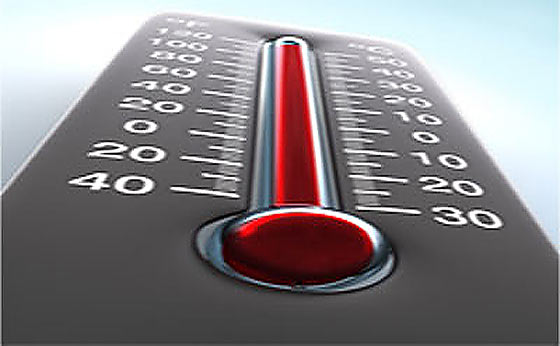Temperature Versus Food Storage Shelf Life
Temperature is the most important factor having to do with general food storage shelf life. Here’s how it relates…
There are temperature versus food-storage shelf life statements and charts around the internet, some of which are in error (I have made this same mistake). Having recently read about accelerated shelf life testing by companies who do this, I have discovered the flaw which others have made with regards to the relationship between temperature and food storage shelf life. That is, degrees Celsius versus degrees Fahrenheit.
Many have stated and charted that for every 10 degrees (F) of increased temperature, the shelf life will halve. For every 10 degrees of cooler storage temperature, the shelf life will double.
The problem with that is the actual formula used to calculate this relationship is referenced in degrees Celsius, not Fahrenheit!
Two correct ways to state the general relationship are as follows:
For every 10 degrees C, shelf life will halve or double (hotter-cooler).
For every 18 degrees F, shelf life will halve or double (hotter-cooler).
There are caveats which will affect the exact ratio, but the general statement is accurate based on the Q10 temperature coefficient and the Rule of 10.
Q10 Rule-of-10 Temperature vs. Shelf Life
The temperature coefficient (Q10) represents the factor by which the rate (R) of a reaction increases for every 10-degree rise in temperature (T).
Q10=[R2/R1]^[10/(T2-T1)]
T1: Hypothetical Storage Temperature (C)
T2: Room Temperature Constant (22 C)
R1: Rate Reference of the rated shelf life (# days, weeks, months, years, etc.)
R2: Rate to solve for (will be same unit as R1)
Q10: 2 (doubling)
Examples
(rounded to nearest decimal)
degrees-Celsius
A can of food with a rated shelf life of 1 year (at room temperature 22 degrees C) will actually reduce to one-half year if stored at 32 degrees C.
degrees-Fahrenheit
A can of food with a rated shelf life of 1 year (at room temperature 72 degrees F) will actually reduce to one-half year if stored at 90 degrees F.
Formula for the example above:
T1: 32-degree-C storage temperature
T2: 22-degree-C room temperature constant
R1: 1 year rated shelf life
R2: ?
2=[R2/1]^[10/(22-32)]
solve for R2
R2=0.5
If we store the same can of food in a cooler environment, the inverse is true…
degrees-Celsius
A can of food with a rated shelf life of 1 year (at room temperature 22 degrees C) will actually increase to 2 years if stored at 12 degrees C.
degrees-Fahrenheit
A can of food with a rated shelf life of 1 year (at room temperature 72 degrees F) will actually increase to 2 years if stored at 54 degrees F.
Formula for the example above:
T1: 32-degree-C storage temperature
T2: 12-degree-C room temperature constant
R1: 1 year rated shelf life
R2: ?
2=[R2/1]^[10/(22-12)]
solve for R2
R2=2
More Examples
Let’s say some of your #10 cans of long-term survival food is stated to have a shelf life of 10 years. By keeping them downstairs in the basement which may be 65-degrees, in theory you’ll get 13 years shelf life.
Another example is when you’re storing some food (cans, food bars, etc.) in a 72-hour kit which is inside your vehicle during the hot summer. Something with a given shelf life of 1 year while stored in a 100-degree-F car will be reduced to 17 weeks (slightly more than 3 months).
The basic lesson here is that you can potentially significantly increase your food storage shelf life by storing in a very cool environment while at the same time you can severely harm food storage shelf life in a hot environment.
The lower the temperature, the better.
The higher the temperature, the worse.
Sources:
Q10 temperature coefficient calculator
Metric conversions
MOCON shelf life studies

